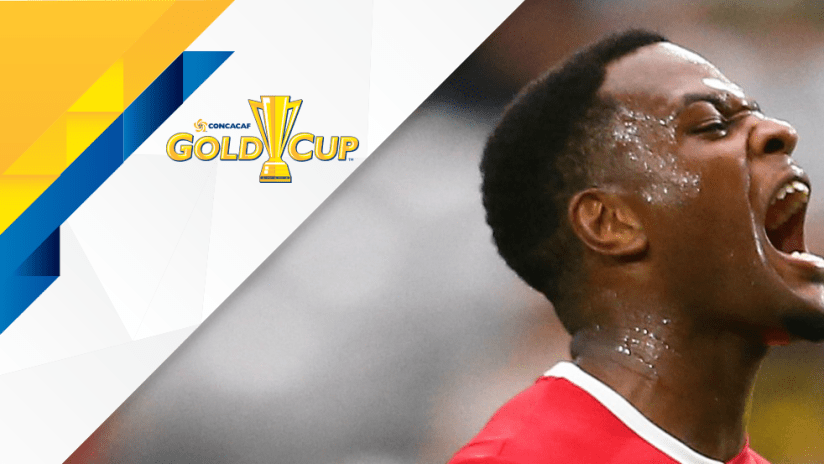Canada’s journey at the 2017 CONCACAF Gold Cup is over, but their journey towards the 2022 World Cup is just beginning.
A 2-1 loss to Jamaica in Thursday’s quarterfinals spelled the end for Octavio Zambrano’s team, which was appearing in the Gold Cup knockout stage for the first time since 2009 (also ended with a loss in the quarterfinals). But despite the defeat — which was the North American nation's first in seven games this year — Canadian players and fans will be leaving the tournament with renewed optimism about the team’s long-term prospects.
And they won’t have to wait long to try and get some revenge against the Reggae Boyz. The two teams meet in a friendly at BMO Field on Sept. 2.
LARIN TO GO
After being left off the 23-man squad for the group stage, Orlando City SC striker Cyle Larin made his return to the Canadian team and was immediately inserted into the starting lineup against Jamaica. It was his 21st appearance for the national team, but just his second under new head coach Octavio Zambrano.
The decision was a divisive one, given how well Lucas Cavallini had fit into Zambrano’s system thus far in the competition. Opponents of the decision got some ammunition in the early going, when Larin missed a mostly-open header in front of goal.
Cavallini was brought on to replace Larin after 55 minutes—and proceeded to miss a free header of his own shortly thereafter. This game marked the beginning of what could be a long-running Larin vs. Cavallini debate in national-team fan circles.
SLOW STARTS
Canada were ultimately done in by the first few minutes of both halves, in which their own quality spells of possession were undone by moments of defensive lapses that opened the door for Jamaica to capitalize.
With Jamaica’s calling card being their speed and counterattacking ability, the decision to start Steven Vitoria over the more fleet-footed Manjrekar James may be even more worthy of retroactive second-guessing than Zambrano’s choice of Larin up top.
WHO’S ON DECK?
Zambrano used 21 different players throughout the course of the competition, and has already suggested that he’d like to have a closer look at a number of players—including Tesho Akindele, Will Johnson, Kianz Froese and Juan Cordova—that didn’t feature in this Gold Cup competition.
So if you found yourself falling in love with the particular combination of players that led Canada to a somewhat-unexpected run to the quarterfinals, your affection may need to find a different outlet for the next little while.
In other words, Zambrano’s overarching goal is to evaluate as much of Canada’s sprawling (and often quirkily obscure) player pool as possible in the two years between now and Canada’s return to World Cup qualifying.
A few players, such as Samuel Piette and Michael Petrasso, made surprisingly strong cases for their inclusion in that long-term mix. But the road towards 2022 is a long one indeed.













